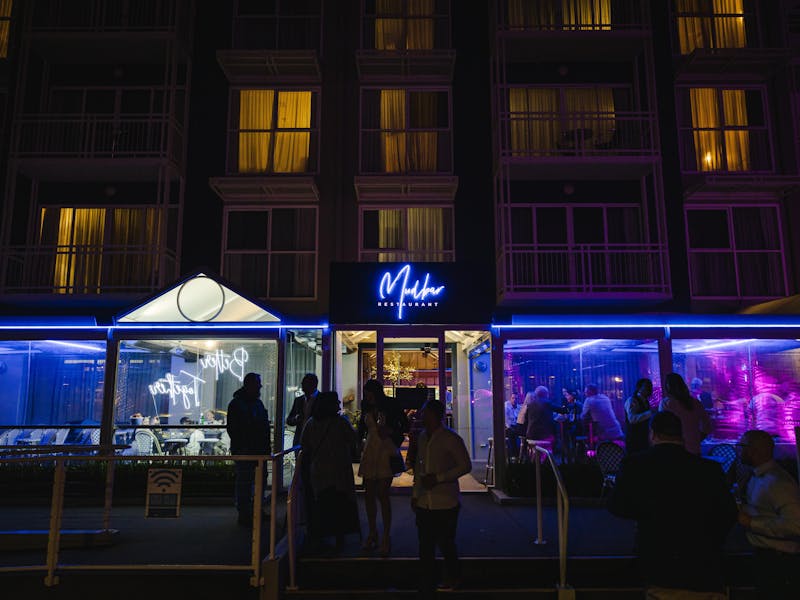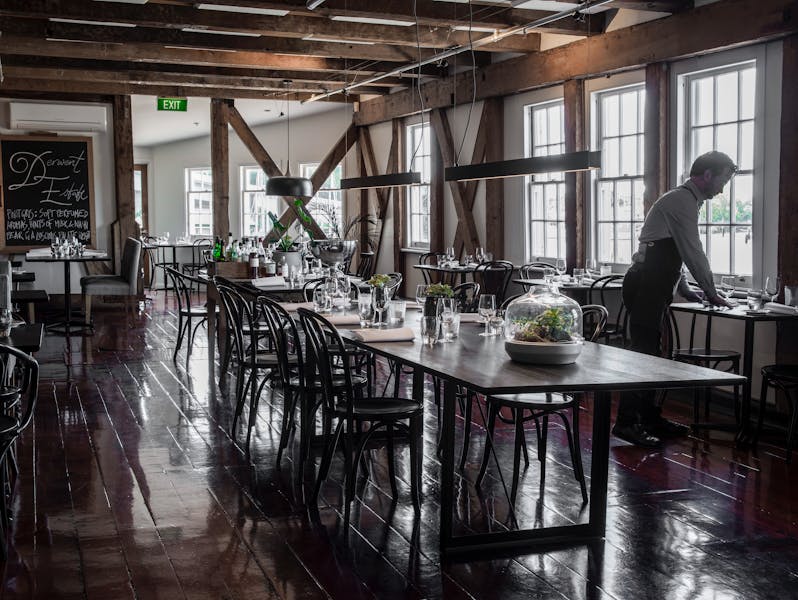
This is true urban wildness – a 5km stretch of forested river reserve wrapped around a dramatic gorge, just a stroll from Launceston’s city centre.
Generations of Launcestonians have cherished Cataract Gorge as their place to reconnect, unwind and relax, and this naturally abundant area has long been a significant cultural site for the Palawa (Tasmanian Aboriginal community). With its dramatic cliffs, peaceful bushland, flowing fresh water and park facilities, the surprising proximity of Cataract Gorge to both Launceston city and nature's serenity makes it special for travellers, too.
“Where in the world can you be in the city and 15 minutes’ [walk] later be in the middle of a 65-million-year-old gorge?” says Jo Larter. Her family has run the much-loved Gorge Scenic Chairlift since 1972.
“There is a calmness that comes over you here. Even when there are lots of people here – she just seems to embrace everyone. Whether you want to walk for hours or just park yourself under a 130-year-old tree, there’s something for everyone.”

The history
The natural history of the Cataract Gorge along Tasmania's South Esk River stretches back tens of millions of years. And as a significant site for the Palawa, its human history is long and rich. When William Collins, one of the early European settlers in the area, saw Cataract Gorge, he reported, “the beauty of the scene is probably not surpassed in the world”.
Gorge Scenic Chairlift
So much view, so little effort. The Gorge Scenic Chairlift has been offering vistas over the gorge, First Basin, South Esk River and 1867-built Kings Bridge without a hitch since 1972. Stretching about 457m from station to station with a central span between two pylons of 308m, the chairlift’s central span is the world’s longest of its kind. The ride is delightfully slow, gliding about 1m per second, with a chair coming every few minutes from 9am year-round and evening closure times dependent on the season. It can be reached by a free inclinator, offering increased accessibility for people with limited mobility. And when you're up there, it's hard to know where to look, with its beaming rhododendrons, fern glades and dolerite cliffs all vying for attention.
“I just love the joy that we, and the gorge, are able to bring people,” says Larter.
After stepping off the chairlift, there’s an outdoor swimming pool, tea rooms and peacocks, ready to be doted upon.


Cataract Gorge
Cataract Gorge highlights
Find old gatekeeper's residence Kings Bridge Cottage on the fringe of Launceston’s city centre, beside Kings Bridge and the Zig Zag Reserve, which contains a historic and challengingly steep walking trail linking the bridge to First Basin. Here at First Basin is where you can experience most of the gorge’s recreational attractions.
Enjoy the gated public swimming pool in summer and laze on the surrounding lawns. Or strong swimmers can dip into the cold waters of the gorge itself when the current isn't strong.
Linger at Cliff Grounds to visit the historic rotunda and picnic areas. Say g'day to pretty peacocks roaming a formal Victorian garden, and the occassional grazing wallaby.
Food vendors at the Gorge are temporarily closed, but you can grab a bite at nearby Stillwater for refined all-day dining in a restored flour mill at the edge of Kings Park, not far from Kings Bridge. Or pack a picnic and settle under a tree.
Walking trails
Cataract Gorge is threaded by walking trails through natural grassland, woodland, dry forests and wet gullies where wildlife like wallabies and pademelons roam. Popular options include the easy, sealed Cataract Walk, which links Kings Bridge to Cliff Grounds and offers rewarding views (2km return).
The easy First Basin Loop has the chairlift overhead and views of the swimming pool lawn (1.8km return). Duck Reach Trail leads to the historic Duck Reach Power Station (now a museum) and suspension bridge and is moderately challenging (4km return).
The steep Reed Gully and Snake Gully tracks are challenging; experienced hikers use these to return from the power station in a test of their skills (2km one-way).
Walkers can combine several walks to form a loop, such as Zig Zag Track on the south side of the gorge, the First Basin Loop, Duck Reach Trail – including the suspension bridge at the power station – and Cataract Walk.
Cataract Gorge Tours
Whether you're plunging into adventure or delving into history, diverse tours are available to give you a deeper perspective during your Cataract Gorge visit:
- Cataract Gorge Cruise – Experience the sparkling River Tamar / Kanamaluka region on this 50min boat ride to the scenic gorge.
- Cataract Gorge Half Day Climb/Abseil – A climber's dream, abseil off a cliff over the water and try some rope climbing. Fear of heights? Let the tranquil views distract you and soothe your heightened heart rate.
- Cataract Gorge Cultural Tour – Trawlwoolway man Greg Murray runs Kooparoona Niara tours, immersing you in the cultural stories and insights shaping this spiritual and significant site.
- Launceston Half Day Tour – This half-dayer beginning in the morning combines a gorge visit with exploration of Launceston, the city of gastronomy, the old Duck Reach Hydro Electric power station and some gin and wine along the way.
- Penny Royal Adventures – A recreation of 19th century style villages in Tasmania, Penny Royal offers historic boat rides, cliff jumping, ziplining and clifftop walks.
Where to stay near Cataract Gorge
From retreats and lodges to resorts, cottages, hotels and farm stays, here's where to browse the best accommodation in Launceston. Hot tip: filter your search as you go to find what you're looking for.
How to get there
You can access Cataract Gorge Reserve via Hillside Cresent by car. If you're walking from Launceston's city centre, it takes about 15min to reach the gorge via Paterson St and Kings Bridge. Entry to the gorge is free. The Gorge Scenic Chairlift costs about $10–15 one-way or $12–20 return, with children under 3 riding for free.









